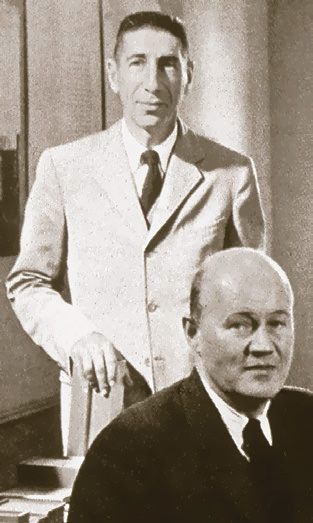When God Went Mod
 |
 |
|
|
 |
|
|
When, during the height of the mid-century's beatnik era, architect Walter Netsch was assigned to design a chapel for some of the squarest young men in America—U.S. Air Force cadets—he sought inspiration from the greatest churches in the medieval pantheon.
One was the elegant Sainte-Chapelle in Paris, dating to the 1200s, and another was the Basilica of Saint Francis Assisi, in Assisi, Italy, of similar date.
Why then did Netsch's plan for the Cadet Chapel cause an uproar in the U.S. Congress, with lawmakers calling it "a monstrosity" and "a row of polished teepees"?
No, modern architecture hadn't found full acceptance in 1957.
Netsch, who was with the architectural firm of Skidmore, Owings and Merrill, was far from the only modern-minded architect to face fury when designing a church that was neither pointed-arch Gothic, clapboard New England, red brick Georgian, or, in California, Spanish Colonial.
In America's heartland—Illinois, Wisconsin, Indiana, and their neighbors—young architects of the mid-century wishing to create "churches for today" were producing suburban structures in modern styles, pleasing some people but angering others.
The churches these men were producing were derided as "grocery store" or "gas station" churches, according to Gretchen Buggeln, author of the fine book The Suburban Church: Modernism and Community in Postwar America.
Still, since the conclusion of World War II, architects globally were arguing that new churches must have a new style to reflect current needs and functions, new ways of worshipping, and new ways of understanding God.
The French architect Joseph Pichard expressed this idea in his 1960 book Modern Church Architecture. If "we are unable to create our own religious art," he wrote, "the implication [is] that we cannot find our own way to God."
Designers, he wrote, need to get away from "nostalgic concerns." "We must now ask ourselves," Pichard wrote, "what we, who are used to scientific precision and practicality, and whose main belief is in the oneness and importance of the human race, can add to this sumptuous heritage and manifold expression of faith."
And he noted that designing a church is no easy task: "The architect must localize the Infinite in a specific place and build walls around the Unlimited."
But despite an ingrown distaste for radical design among many churchgoing people, modernism did succeed. Just as suburbia was booming with new tract homes from the 1940s into the 1960s, it was filling with new churches, many in what was called 'contemporary' design. In 1946, according to Buggeln, spending on church building in the Unites States was $126 million. In 1958 it hit $863 million.




